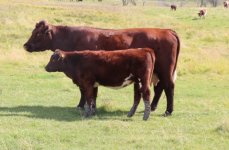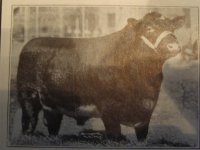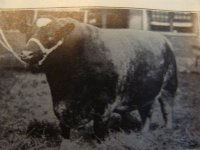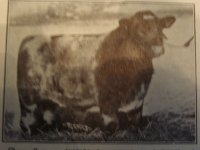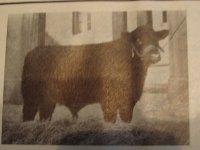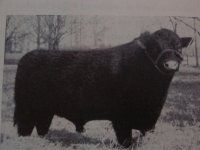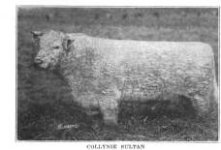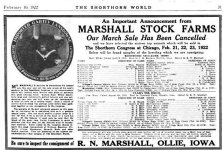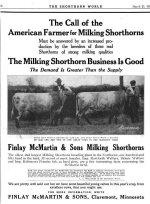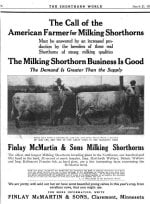Okotoks
Well-known member
- Joined
- Aug 17, 2010
- Messages
- 3,085
I know exactly what Oakview is talking about. In 1965 and 1966 we purchased two cows from Braeside Stock Farms to establish the Frimley herd. We still have descendants of the one in the herd. The other one was a daughter of Bapton Constructor out of an imported Scottish cow also from Bapton. She had a beautiful head, deep body and very easy fleshing but 20 years of breeding to bigger animals and there still was not enough performance. The other one was imported Scottish breeding on the sires side but out of a large Canadian bred cow, a lot of animals in our herd decend from her as there was a lot more performance. I still like looking at the Louada Sale catalogues of the 60's with the beautiful heads and deep fleshy bodies but I know the performance of most was less than adequate. It was in the late 50's and 60's that commercial breeders really started moving away from the breed and when the European breeds arrived it forced Shorthorn breeders to try to get back the performance they had lost.There were still good Shorthorns around but they had not been the show winning popular types and they were sought out. I like a good head on an animal but a good muzzle and jaw for foraging is key and the cattle with that will usually do better. Here is a picture and video of a cow we purchased in the Eionmor Dispersal last year that is 63/64 native, the other 1/64 being Highfield Irish Mist. Mist in my opinion was one of the greatest sires of top producing brood cows in the breed. I think this cows ability to maintain condition and raise a good calf is where the breed needs to focus. She is entering our donor program and we plan on flushing her to her grandsire Eionmor Mr Gus 80C.oakview said:I am thankful everyone has their own goals. It would be very boring if we all had the same type of cattle. I think it's great that there are genetics available to mold the type of beast that fits anyone's goals.
Funny you should mention "good heads." The first cow I purchased, actually Dad bought her for me and registered her in my name since I was only 9, was Lady Anna 2761109. That was in 1964 and I believe she was over 10 years old. I still have her pedigree somewhere. She had the first purebred Shorthorn calf at Oakview Shorthorns (known for the first several years as Circle F). It was sired by SV Caesar 25th, a son of Louada Caesar who was sired by Bapton Constructor. I remember how disappointed I was in that calf because it had a "bad head." The "bad head" came from the cow. I later bought a daughter of Louada Aristocrat that had a bull calf at side sired by Scotsdale Arrogant. They both had "good heads." Though she had a good head, I don't think that cow ever weaned a calf over 400 pounds. My first show heifer was from the Thede Ranch, Clara 141st, sired by Meadowview Constructor, another son of Bapton Constructor. Ted Aegerter, Jeff's Dad, picked up several heifer calves for us at the Meadowview Ranch sale in South Dakota. I still have the sale ticket, she cost $200. She had a good head, too, and placed 3rd in a class of about a dozen at the county fair. She never raised a calf. I think my eye for cattle has improved over the past 50 years. At least I hope so!
Lots of good memories in this topic.
http://youtu.be/EDiraaQxEHI

